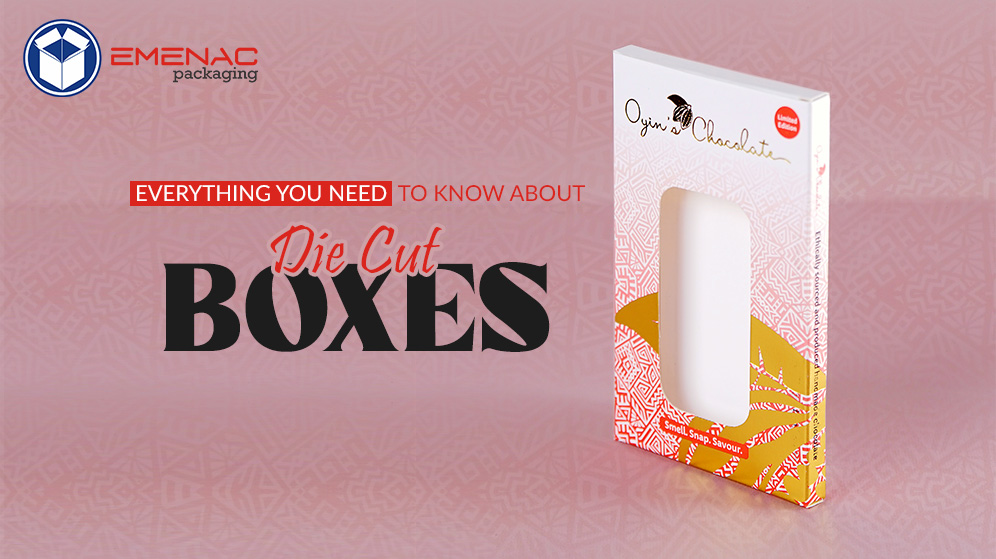Everything You Need to Know About Die Cut Boxes

Packaging boxes have become an integrated part of product sales and promotion. Their evolution has been a great deal of help in the marketing efforts of the companies that are aiming for the top spot in the marketplace. The efficiency of delivering your brand through your product packaging message and motto is second to none. Types of packaging boxes are far and wide, however, our focus in this article will be on die-cut boxes.
Die-cut boxes are made with the use of metal plates or machines that cut the thin materials into different sizes and shapes. The plates used punch pout the material in distinctive dimensions, making each different than the other. The downtime of the process is very low as the prints are already made on the large sheet and once custom printing is complete, the plates punch out the boxes into their final shapes. Let us dive deeper into the matter:
1. Materials of Die Cutting Boxes:
Since products vary in their nature and types i.e. cosmetics, food, and clothes, etc. the material of the boxes must be chosen accordingly. Each material has its particular properties that make them fit for the packaging of different purposes. Case in point, kraft boxes are used for their reduced impact on the environment and their strength. Features as such are important for packaging materials because sometimes the products travel distances before they reach the customers or they need to be encased in materials that pose no harm to their integrity.
2. Types of Die Cut Boxes:
There are mainly two types of die-cut boxes that you can find; folding and rigid. As the names suggest, folding cartons are somewhat flexible ones and can be folded or assembled into different box shapes. Whereas rigid boxes do not fold or reassemble but rather retain the shape they are manufactured in. Each of the types has unique benefits, for instance, folding boxes do not cost much with a faster production rate and shipping also costs less. As for rigid boxes, the dies do not cost much and they are a good option if you are rooting for a strong brand perception among your customers.
3. Die Cut Boxes for Shipping:
When products are shipped from one point to another, retailers are required to know the specifications of their products. This is required of the sellers since the packaging material and box details depend on such details.
Custom die-cut boxes are the best choice for shipping products either near or far. They have the right combination of strength and utility to deliver products to customers and stores efficiently.
4. Variants of Die Cut Boxes:
Aside from the shipping boxes, there are several other areas of the market that are under the influence of die-cut boxes. Below is a list of the different variants of die-cut boxes:
Suitcase Boxes:
An efficient box that is self-closing and has a carrying handle, suitcase boxes are a good choice for sellers that want to make an impact with their unique packaging.
Tote Boxes:
Made of cardboard material, tote boxes are a good choice when you want to avoid the use of adhesives to keep your packaging environmentally friendly. Some adhesives like plastic tape etc. get in the way of recyclability of packaging materials, hence tote boxes with snap-lock bottoms are good for your purpose.
Mailer Boxes:
There is no doubting the fact that online retailers are fond of die-cut custom mailer boxes. Efficiency is defined by their one-piece body that has an easy to open and close lid that can be utilized more than once.
Die-cut boxes are used in every sector of the retail industry. They are used by all sellers be it in-store selling or online retailing, your packaging needs can always be fulfilled with custom die-cut boxes.
 Apparel Boxes
Apparel Boxes
 Bakery Boxes
Bakery Boxes
 Cosmetics Boxes
Cosmetics Boxes
 Medicine Boxes
Medicine Boxes
 Retail Boxes
Retail Boxes